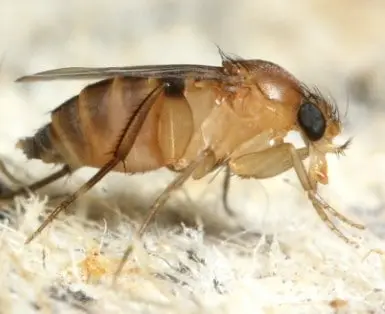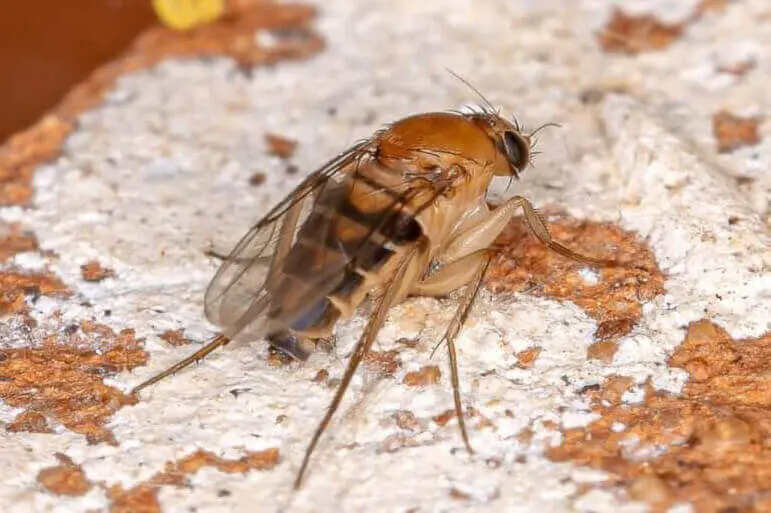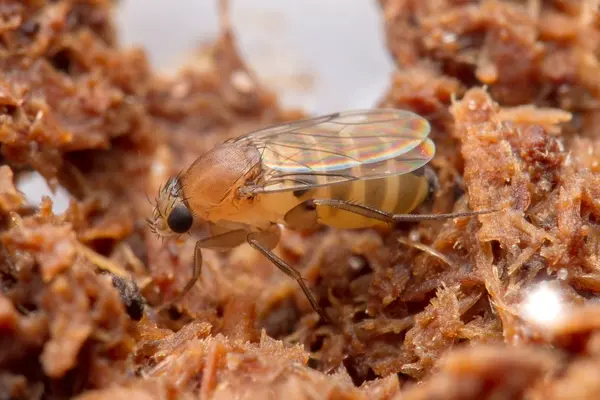Tiny Invaders, Big Concerns: Phorid Flies Under the Microscope!

Phorid Fly (Phoridae)
Size: 0.5–5 mm
Color: Yellowish, brown, or black
Body Shape: Humpbacked appearance with a rounded thorax
Wings: Transparent, with visible veins
Eyes: Small and dark, on the sides of the head
Antennae: Short and bristle-like, used for detecting food and pheromones
Erratic flight patterns resembling running rather than smooth flying
Known for their preference for decaying organic matter

Feeding Preferences
Phorid flies are highly attracted to decomposing organic material, which serves as both their food source and breeding ground. They thrive on decayed matter, including rotting food, wet waste, and residue found in poorly cleaned drains or garbage bins. These flies are opportunistic and can exploit even the smallest amounts of organic residue left in cracks, crevices, or under equipment. Their feeding habits make them a potential concern in areas where hygiene is not rigorously maintained. Regular cleaning and prompt disposal of waste can help minimize their access to food sources.

Habitat
Phorid flies are commonly found in places where organic materials accumulate and remain damp. They frequent locations such as garbage areas, leaky plumbing, and poorly maintained drains where they can easily access decomposing materials. These insects are particularly drawn to crevices and hidden spaces that provide protection from disturbances. Enclosed spaces like basements, utility rooms, or storage areas with minimal airflow are also favorable environments for them. Maintaining cleanliness and addressing moisture issues can greatly reduce their presence.

UPM's AIR Approach for Phorid Fly:
- Assess: Inspect your home for potential breeding sites, such as drains, garbage bins, and other areas with decaying organic matter, to assess the severity of the infestation.
- Implement: Use targeted treatments like drain cleaners, insecticides, and thorough cleaning to remove breeding materials and control the phorid fly population.
- Review: Regularly monitor areas prone to phorid fly activity, such as drains and garbage areas, and adjust treatments as necessary to maintain control.
Frequently Asked Questions
Phorid flies have a distinctive humpbacked appearance and erratic flight patterns, unlike the smoother flight of fruit flies.
Yes, they can transfer harmful bacteria and pathogens due to their attraction to decaying materials and unsanitary areas.
They are drawn to moist environments and organic debris, such as leaky pipes or poorly maintained trash bins.
While they don’t bite, their presence can indicate unsanitary conditions and pose health risks by contaminating surfaces.
They have a rapid life cycle, and under favorable conditions, they can go from egg to adult in as little as two weeks.
Food handling, healthcare facilities, and waste management sectors often face challenges due to their attraction to organic material.
Regular cleaning, proper waste disposal, and fixing moisture problems are effective preventative measures.